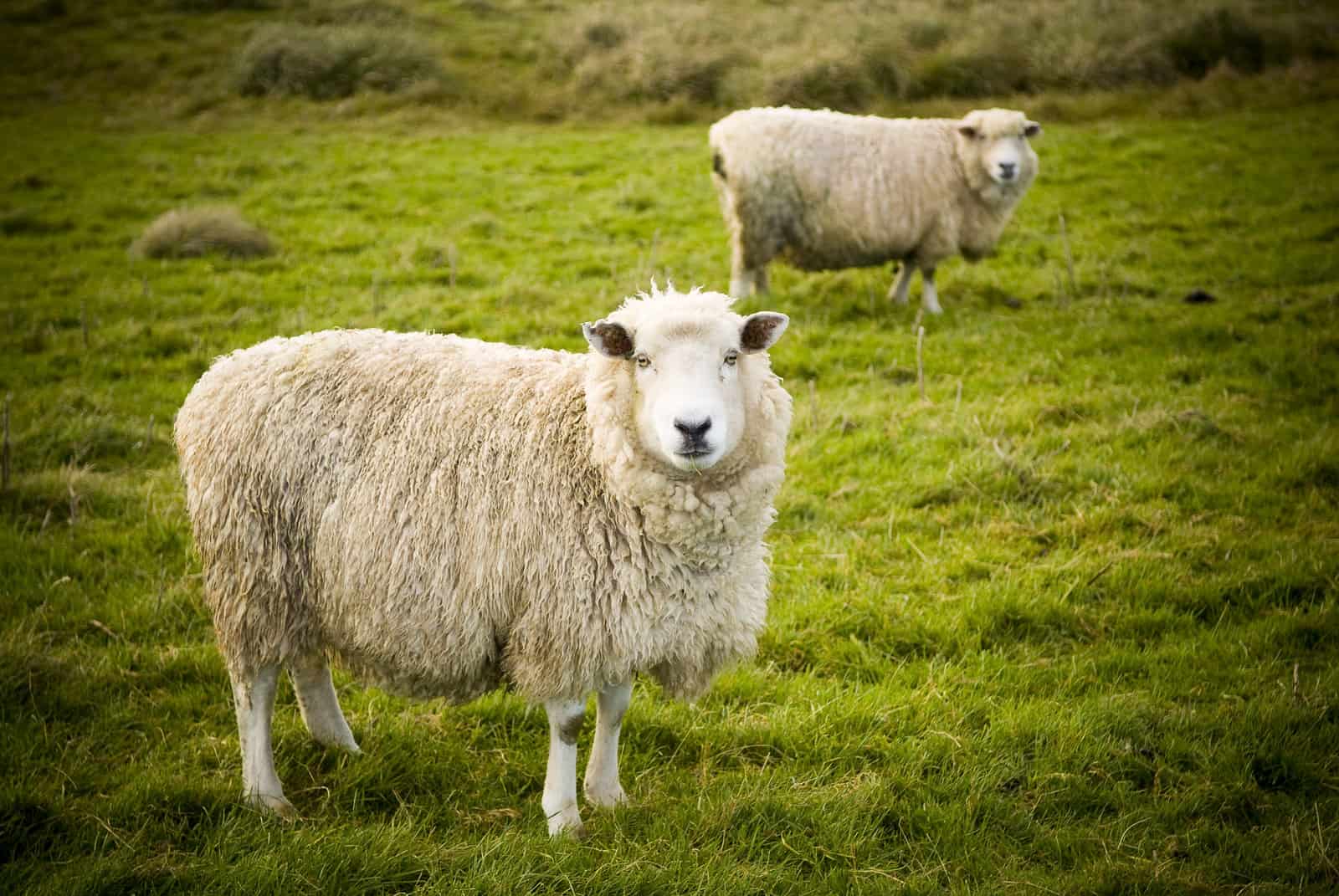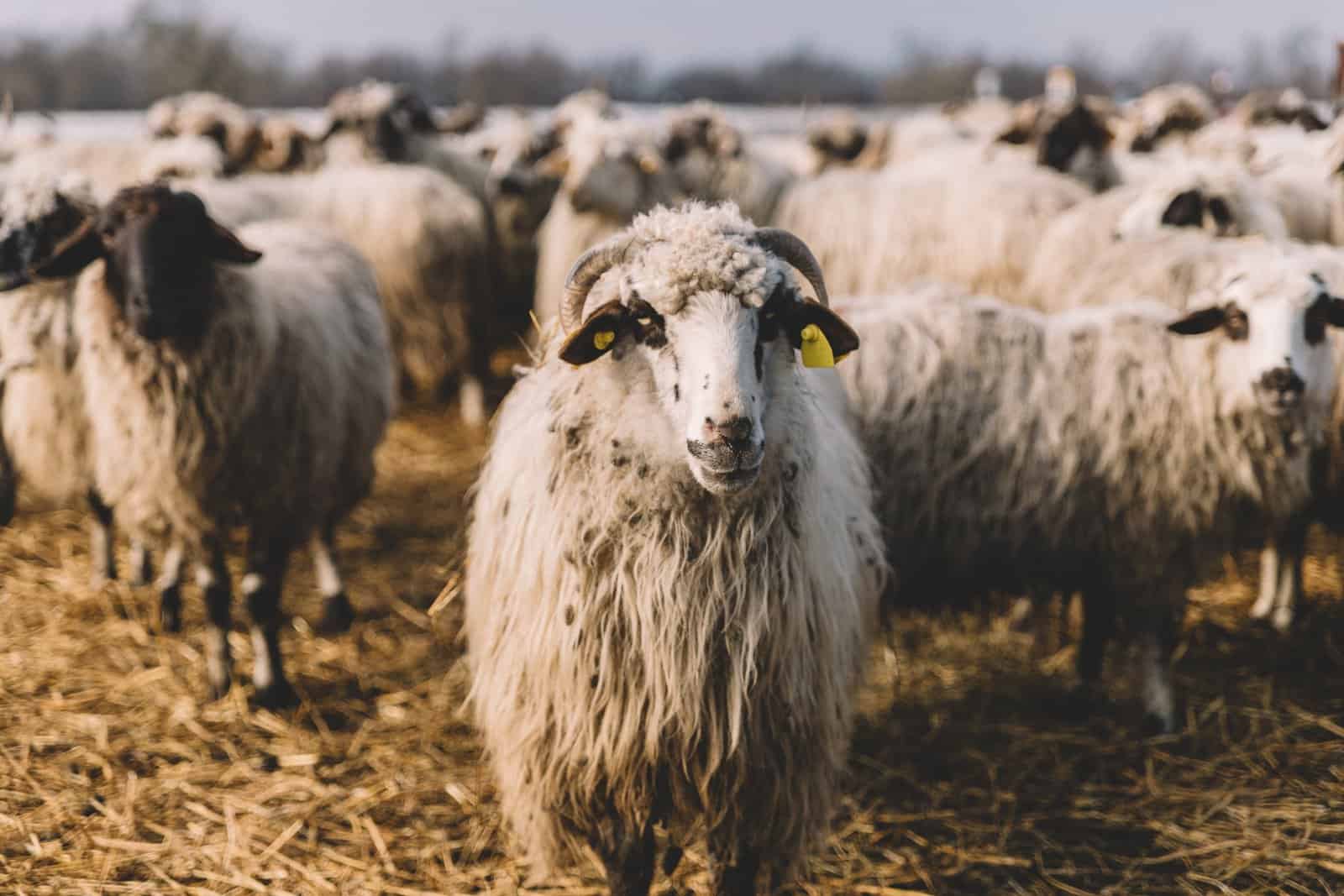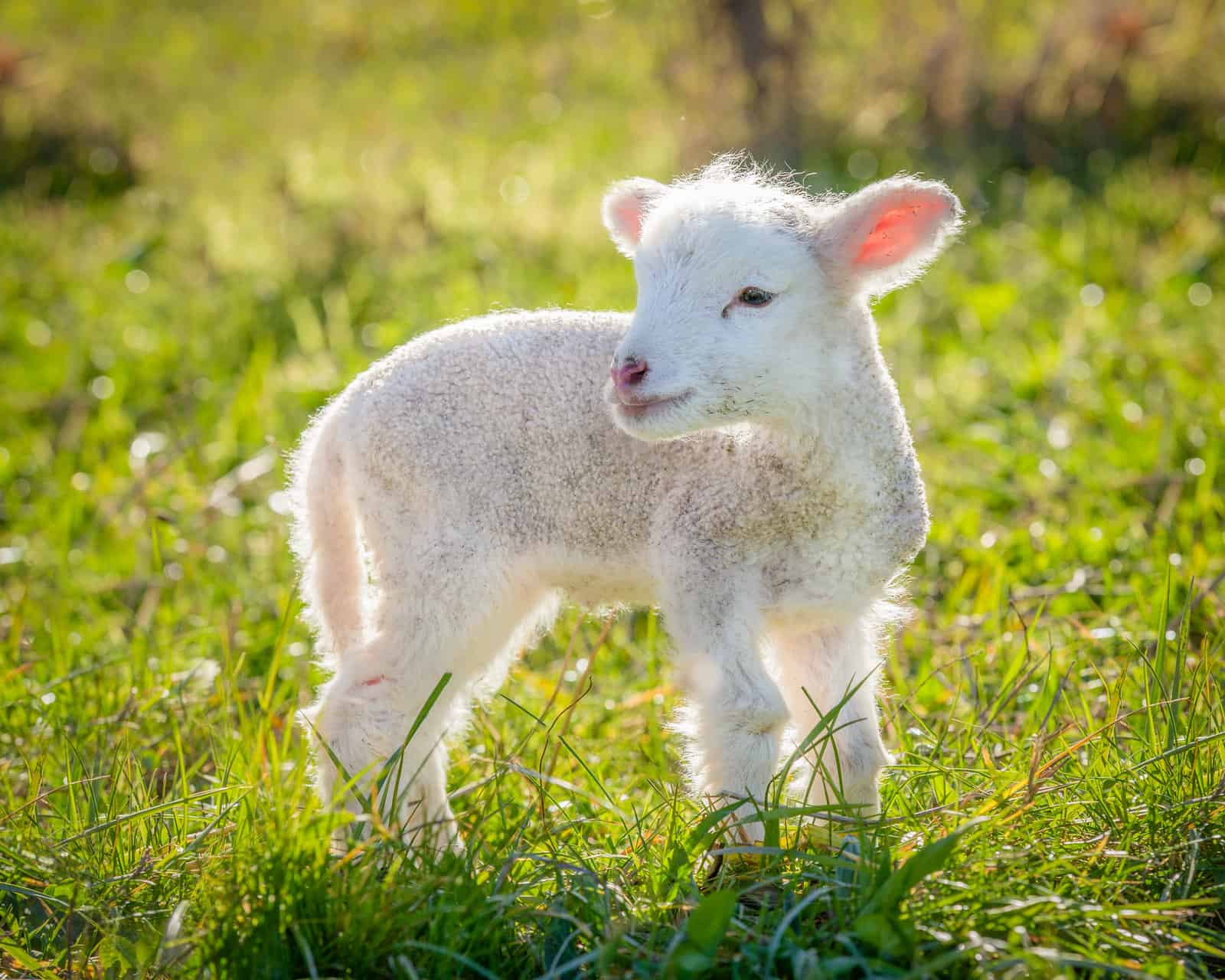
20 Interesting Sheep Facts You Didn’t Know
“Baa, baa, black sheep, Have you any wool?” Do you recognize any of these lyrics? Of course, it’s a nursery rhyme you probably sing a lot! But have you ever considered how much you know about them?
We actually use those fluffy animals for a variety of purposes, including fleece, meat, and, of course, milk. They shear them to obtain the wool; they are the most well-known animal for their fiber.
You’ve probably heard the term “sheepish,” which refers to someone who is a follower; the fluffy animals do follow the flock, but they are brilliant! If you still need to learn more and want to know everything there is to know about them, check out these fascinating facts.
Table of Contents

20 Interesting Sheep Facts You Don’t Want to Miss!
Sheep Facts 1: They don’t have top teeth
Do you know how we have upper and lower teeth? Well, sheep are one of the few animals that do not have teeth in their upper front jaw; then how do they eat? They use their lower teeth to press up against hard upper gums to break down the food.
Sheep Facts 2: they have rectangular pupils
They have excellent vision; they can see everything around them except what is directly behind them, which they can see if they turn their heads. If you’re wondering why? Because they have rectangular pupils, they have a wide field of vision, ranging from 270 to 360 degrees! So when they are in a prey situation, having a sharp eye helps them to be more aware of their surroundings and watch for predators.
Sheep Facts 3: What Is the Name of a Group of Sheep?
There are several terms for a group of sheep, but the two most common are “flock” and “heard.” The terms “drove” and “fold” may also be used to describe a group of sheep, though these are less common.
Sheep Facts 4: The Difference Between a Herd and a Flock of Sheep
A flock is a group of sheep. Larger farms with a large number of fenced-in will frequently refer to their flock as a herd. To make things easier, shepherds lead flocks of sheep and use herding dogs to herd them to feeding grounds. A herd is a large group of sheep or cows living in a grassland.

Sheep Facts 5: What Do Sheep eat?
They are herbivores because they only eat greens such as seeds, grass, and plants. So what exactly is a herbivore? Herbivore animals do not consume meat and only consume plant-based foods.
Sheep Facts 6: The Baby Sheep’s Name
A lamb is a baby sheep. A ewe (female) can give birth to one or two lambs. Triplets are extremely rare, but they do occur occasionally.
Sheep Facts 7: Names of Male and Female
They have different names for males and females. Males are referred to as “Rams”, while females are referred to as “Ewes”.
Sheep Facts 8: Sheep Have a Good Sense of Smell
They communicate with one another and with their surroundings through scent. They have a scent in front of their eyes and between their hooves that secrete odorous secretions they use to communicate!
Sheep Facts 9: They Are Extremely Vocal
The sounds sheep make are known as “bleating,” and they use them to communicate with one another. For example, ewes can tell which lamb is theirs simply by the sound of their calls.
Sheep Facts 10: Sheep Are Social Butterflies
They are social butterflies; they form strong bonds with one another, such as a mother and her lamb, and form other friendships; we can safely say that they are very loyal. They stick together to protect themselves from predators.
Sheep Facts 11: Those Fluffy Animals Are Drama Queens
They can recognize various emotional expressions. This is a necessary skill for them because understanding how others feel in the flock is the foundation for developing solid social relationships and keeping their best friends’ flock safe.
Sheep Facts 12: The Difference Between a Sheep and a Lamb
A lamb is a young/baby sheep, so they are nearly identical. However, when a lamb matures, its name is changed to sheep. They are farm animals raised for their wool.

Sheep Facts 13: They Have Mouths With Philtrum
They have an upper lip separated by a distinct groove called a philtrum. They are picky herbivores, preferring greenery near the soil’s surface to eat. The upper lip separation philtrum allows them to get close to the ground and carefully pick grasses and other plants.
Sheep Facts 14: How Long Does a Sheep Live?
The lifespan is 10-12 years, but the age at which they stop to be beneficial is around 5 years earlier.
Sheep Facts 15: Different Sheep Breeds
- Merino
Merino fluffy breeds are distinguished by their perfect, smooth wool. It was founded in Spain at the end of the Middle Ages.
- Suffolk
The Suffolk breed originated in the United Kingdom. They were cross-breeding between Norfolk Horn ewes and Southdown rams in the late eighteenth century. Black-faced breed raised mainly for meat.
- Hampshire
The Hampshire, also known as the Hampshire, Down, is a breed that migrated from a cross of Southdowns with the Old Hampshire breed, the Wiltshire Horn, and the Berkshire Nott, all of which are horned, white-faced native to the Hampshire Downs.
- Katahdin
They are named after Mount Katahdin, the highest point in the USA. The Katahdin is a domestic breed developed by breeder Michael Piel in Maine, USA.
- Dorper
Dorper is a cross between a Dorset Horn and a Blackhead Persian. Dorpers are a South African breed. The South African Department of Agriculture developed the breed to produce meat suitable for the country’s dry areas.
Sheep Facts 16: Can Lambs Be Kept as Pets?
Sheep and other farm animals are kept as pets or companions. They make excellent pets because they are gentle and respond well to human contact. Lambs are perfect for teaching children responsibility for children.
Sheep Facts 17: Every Year, Sheep Are Shorn
They are shorn once a year, usually in the spring. Most of them are shorn by professional shearers. They are paid by the number of shearings. At a rate of 2-3 minutes per sheep, this can amount to up to 200 per day.
Shearing is an interesting process of removing wool from sheep. It’s similar to giving them a new haircut. Unlike other animals, they do not naturally shed their wool. This causes the wool to overgrow, making shearing necessary.
Sheep Facts 18: Wool Process After shearing
The raw wool is washed, rinsed, and spun after it has been shaved. The wool is placed in nylon mesh bags and pre-soaked to loosen the dirt and grease. The bags are then washed in 140°F water. Biodegradable detergents are used to protect the delicate fibres of wool as well as the environment.
Sheep Fact 19: What Happens to Wild Sheep That Aren’t Sheared?
Some live on farms, while others live in the wild. The farm ones are sheared by a professional, whereas the wild ones are not. Wild ones will naturally shed their bristly winter coats. Instead, they scratch their bodies against trees as the weather warms, rubbing away their excess fluff.
Sheep Fact 20: Dogs Are Used for Herding
Some dog breeds are classified as herding breeds. They were created to gather, herd, and protect farm animals like sheep or cows. Herding dogs are all born with the instinct to control the movement of other animals. Well-trained sheepdogs are unquestionably effective at protecting them from wolves, coyotes, cougars, and other predators.
An Expert
After reading all of these 20 facts about those useful fluffy animals, we can confidently call you an expert! The question is, would you keep a lamb or sheep as a pet? And what are you going to call it?
If you enjoyed learning about this facinating animal why not check out more fantastic facts about other animals: Koalas, Land Animals, Sharks, Raccoons, Moon and Sun Bears, Rats, Chickens, Cats, Pandas, Monkeys and Whales.
Why not subscribe to our LearningMole Library for as little as £1.99 per month to access over 1000 fun educational videos.


Leave a Reply